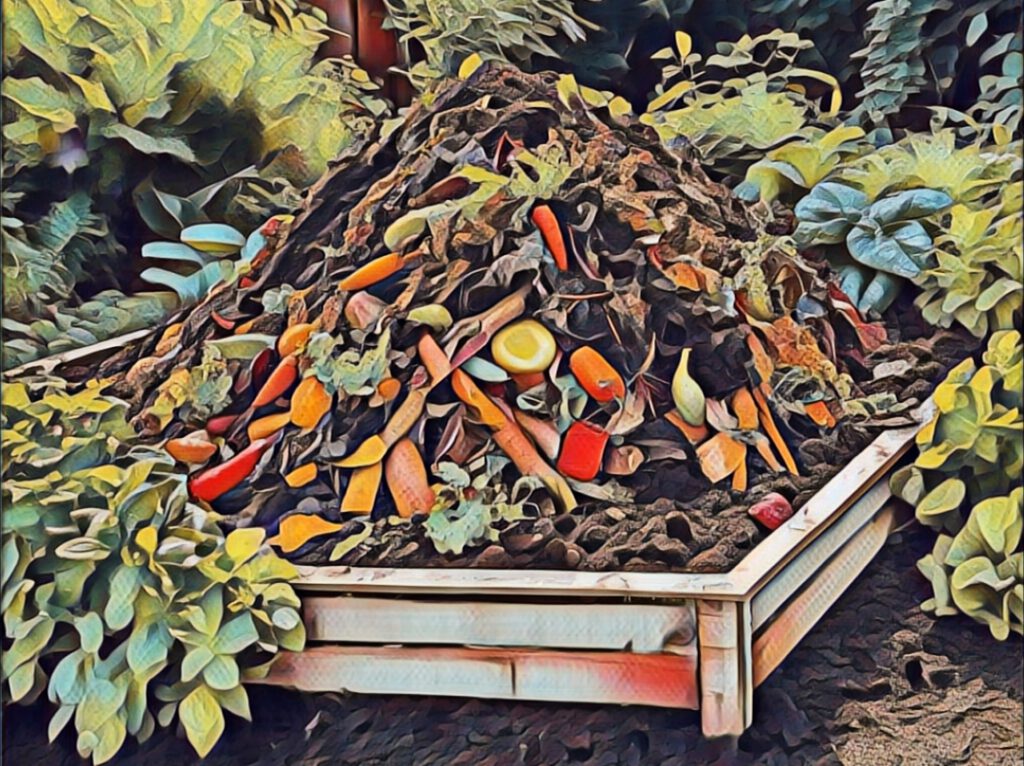There are many important gardening tasks to do in the fall to prepare everything for the winter months while laying a foundation for healthy growth next year. The use of homemade fertilizer offers numerous advantages. Evenly distributed and then incorporated into the soil, it improves the soil structure, promotes microbiology and increases nutrient availability for the next growth periods of plants and lawns.
Whether a mulch layer of fertilizer and brown materials (explanation to follow) to retain moisture and suppress weeds or applied to winter vegetables, ornamental shrubs and container plants – the right mixture ensures good root development during the cold months. Healthy plants can increase their overall resilience. You can also combine homemade fertilizer with other organic fertilizers to further increase richness.
Save money and protect the environment
Financial savings from home production depend on several factors: the size of your garden, the types of plants and the amount of products commonly used. Commercial organic fertilizer can cost 11 – 55 dollars per 55 lbs bag, depending on the brand and quality. Mineral fertilizer is even more expensive. An average garden of around 882 sq ft requires a total of between 88 lbs and 440 lbs of fertilizer per year.
Homemade fertilizer, such as compost, can be made from kitchen scraps, garden scraps, and other organic materials, which are often free because they are already available. This means that your direct costs for fertilizer can be almost zero if you recycle your waste yourself. Healthy soil improves your plants’ yields, which means you may have to spend less money purchasing vegetables and herbs. A well-fertilized garden can also reduce the need for various pesticides or fungicides, which can result in additional savings.

Green waste and red flags
What can go in the compost?
- Green materials (nitrogen sources) such as fruit and vegetable scraps, coffee grounds and filters, tea leaves and tea bags (of course without metal clips) as well as grass cuttings and vegetable waste.
- Brown materials (carbon sources) such as dry leaves, straw and hay, cardboard and paper (unprinted and without plastic coating), as well as wood chips and sawdust from untreated wood.
- Other: Garden waste (plants, trimmings), freshly cut flowers, crushed eggshells, even pet or human hair.
What is not allowed in the compost?
- Animal products such as meat and fish, dairy products (cheese, yogurt, etc.) or large amounts of eggs.
- Any leftover food with oils or fats.
- Pests, usually found on diseased plants or parts of plants and weed seeds or weeds that already have flowers.
- Chemically treated and other problematic materials: means no plastic bags or packaging, cigarette butts (may contain harmful substances), no pet feces, no dishwashing detergents or chemicals.
From grassroots to harvest
Layering materials in compost is crucial for an effective decomposition process. Use larger branches, sticks or coarse material as a base layer. This prevents waterlogging and creates space for air circulation. In the first layer (green) then fresh kitchen waste, grass clippings or green plant parts. Nitrogen gets into the compost and stimulates the growth of microorganisms. Dry leaves, paper or cardboard end up in the second layer (brown). This provides carbon and helps regulate moisture levels.
It continues alternating between green and brown materials. The green layers should be about 2 – 4 inches thick, while the brown layers should be 4 – 6 inches thick. The ideal is to use about two to three times as much brown material as green material to achieve a balanced carbon to nitrogen ratio. The compost can sometimes be covered with a layer of dry leaves or tarp to retain moisture and keep out weed seeds, but should also be turned every few weeks with a fork or compost turner to increase aeration.

